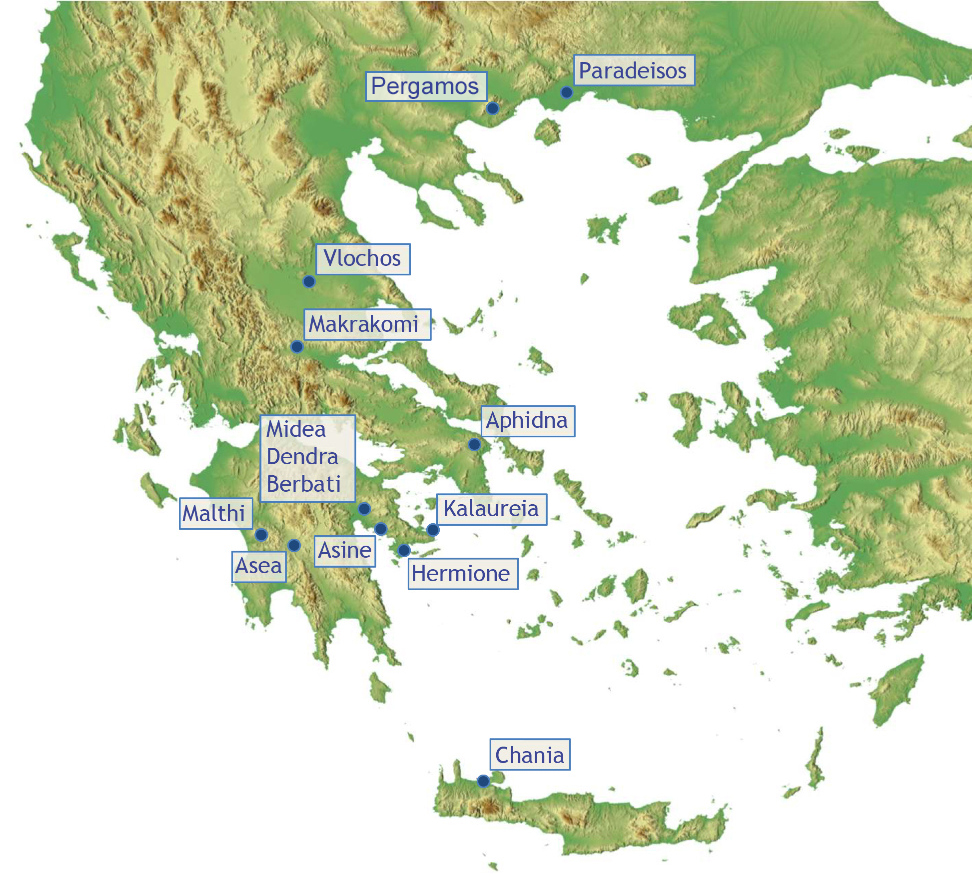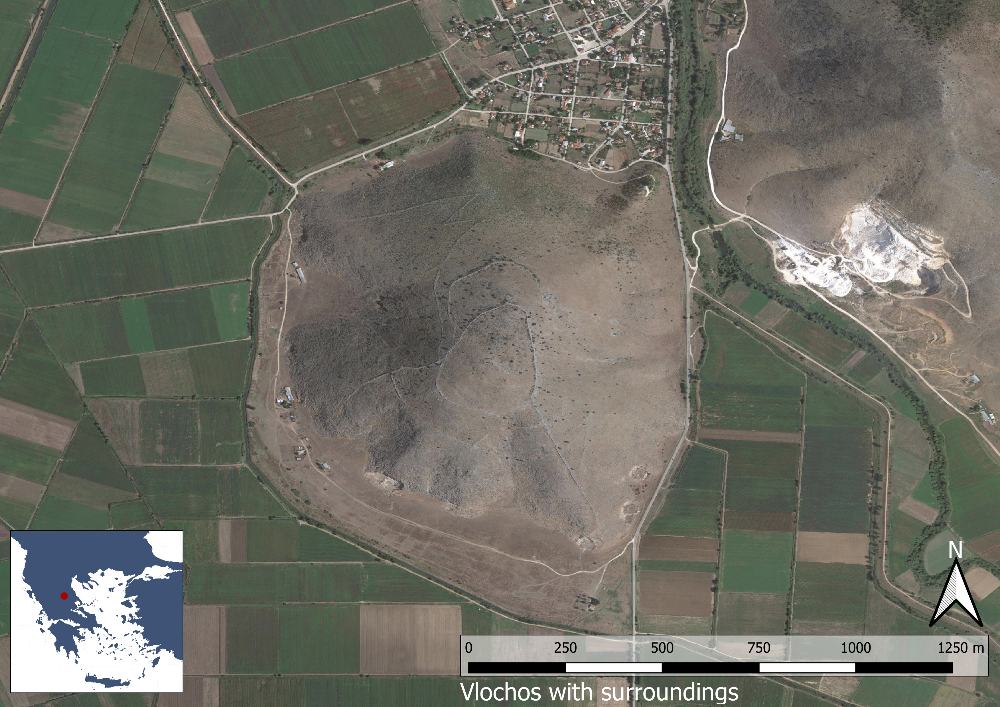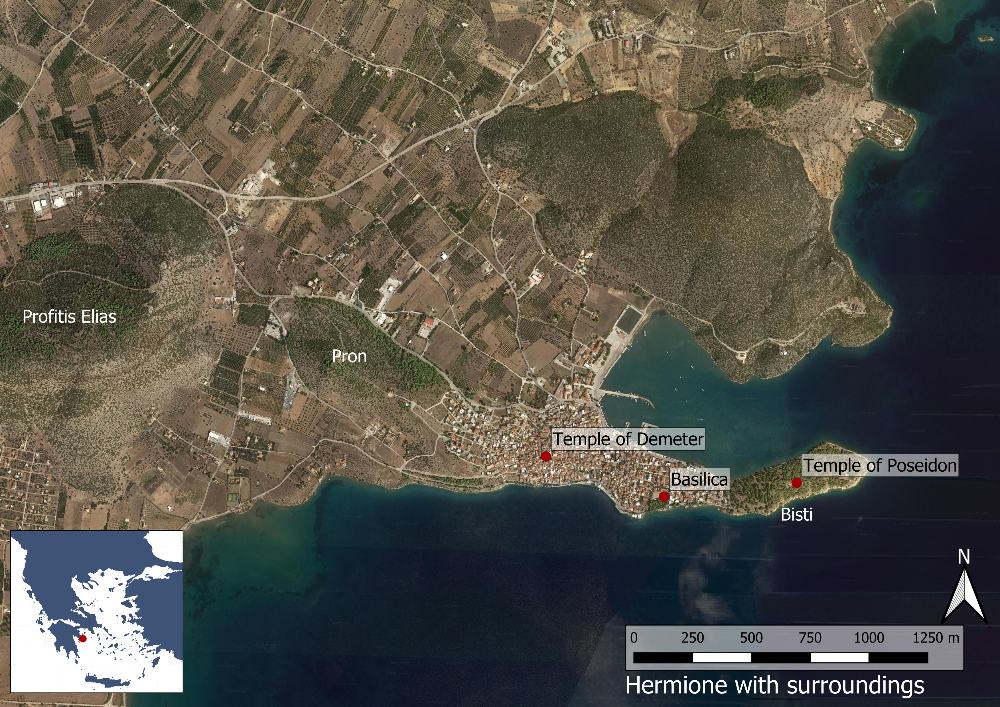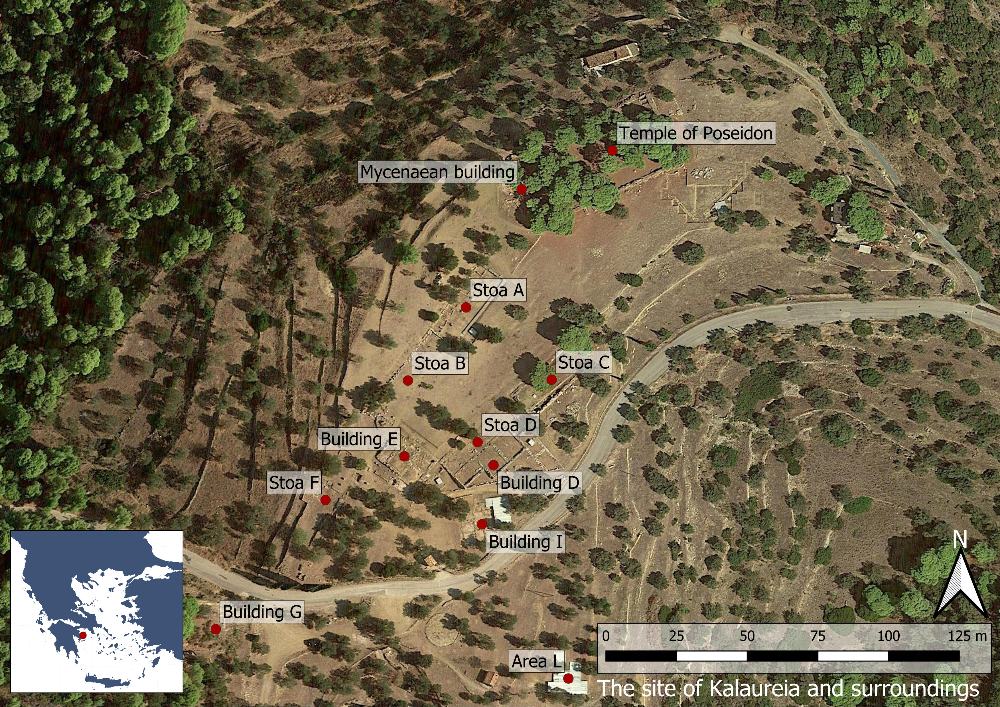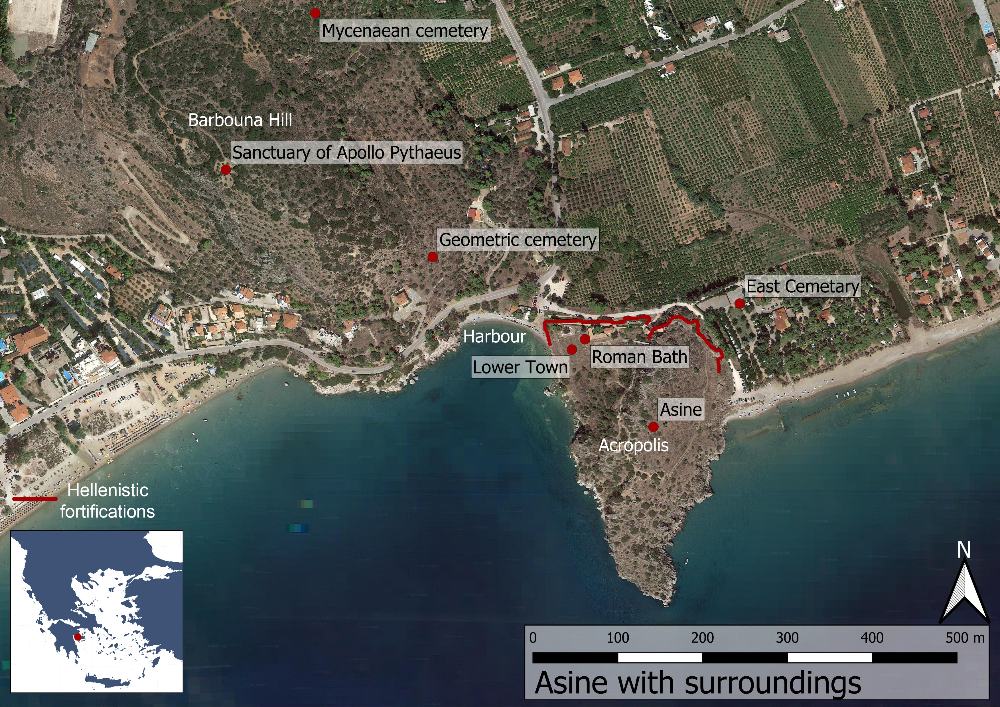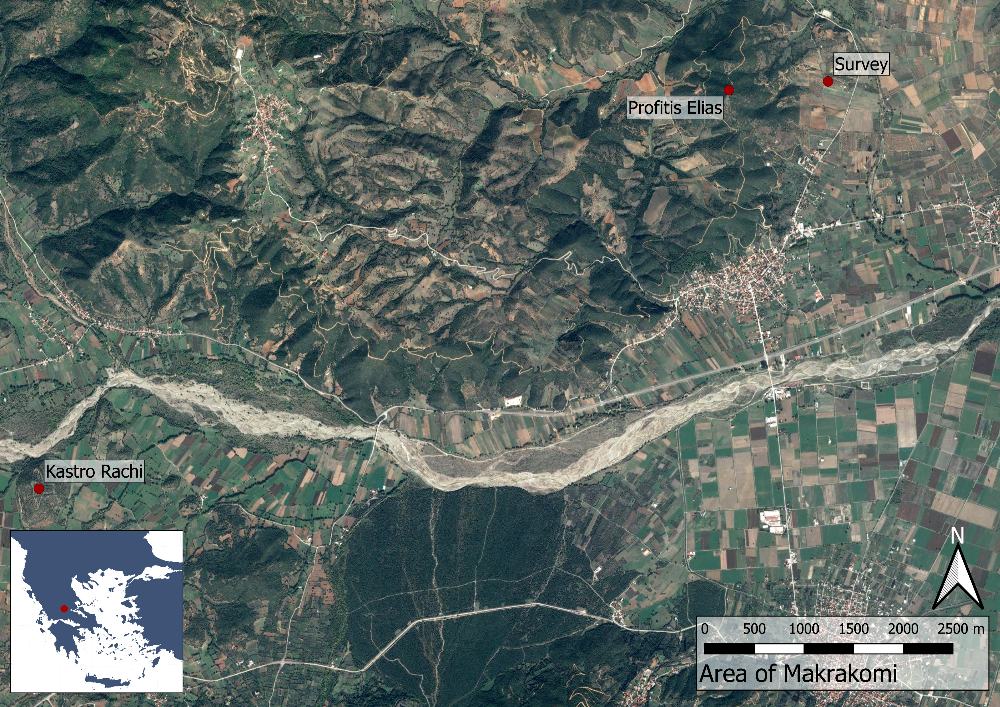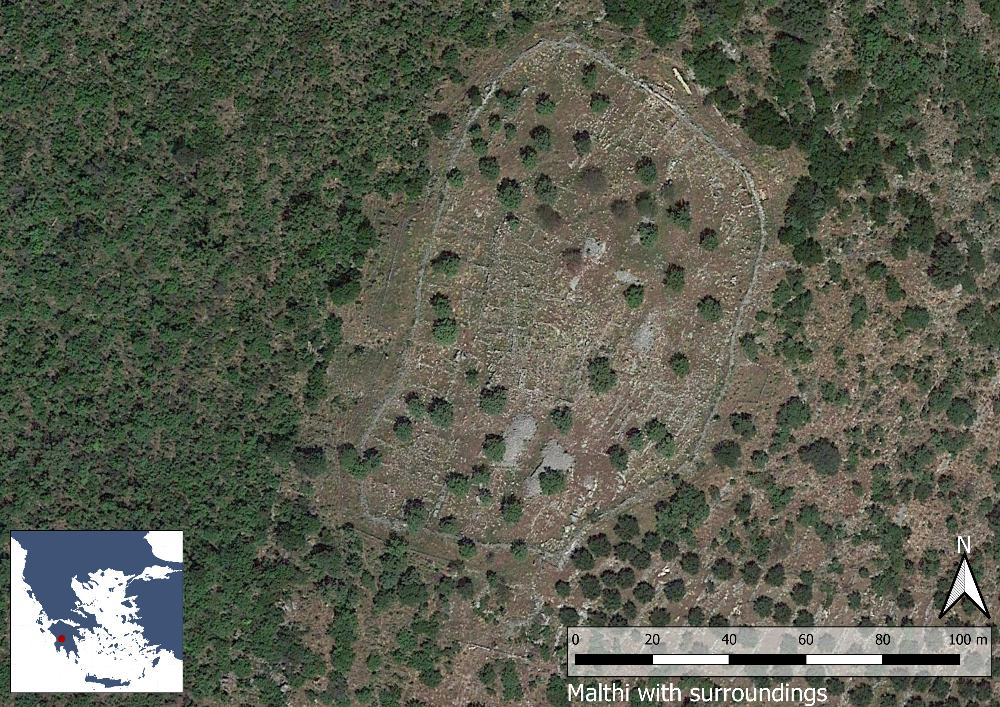Asea Valley, Arcadia (1936–1938, 1994–1996, 1997, 2000–2012)
Published: 2020-06-04
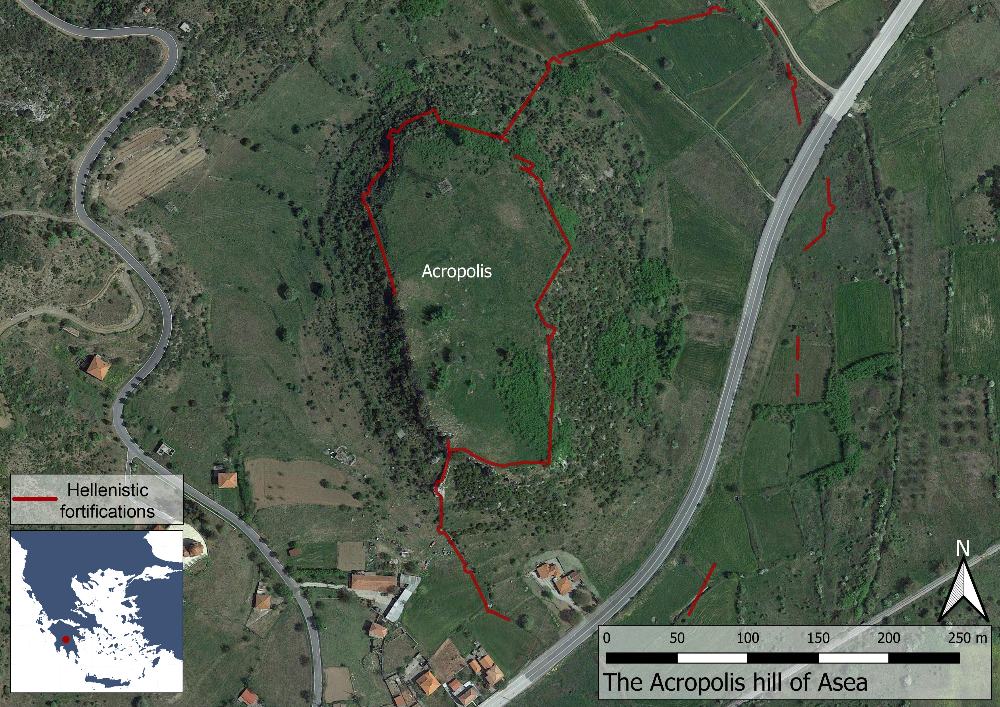
Fig. 1: Map showing the site of Asea and with the line of the Late Classical and Hellenistic fortifications marked in red (Basemap: Google maps satellite image).
The Asea valley is located between the ancient cities of Tegea and Megalopolis in the central Peloponnese. The city of Asea itself, an independent polis between the 6th and 3rd century BC, was located on and around the conspicuous Paleokastro hill at the heart of the valley. The location of the valley is important as it acted as a “main” thoroughfare between Corinthia and the Argolid in the east, and Olympia in the west, during prehistoric and ancient times. Due to few mentions in ancient literature, Asea is mainly known through the archaeological evidence.

Fig. 2: View of the Asea valley from Profitis Elias.
Fieldwork
The earliest Swedish fieldwork at Asea took place in 1936–1938 when Erik J. Holmberg excavated the acropolis, known as the Paleokastro hill. The campaigns revealed remains from the Neolithic period (c. 7000–3100 BC) to the Middle Bronze Age (c. 2000–1600 BC), as well as later occupation, in particular during the Hellenistic period. Holmberg also exposed the foundations of the Late Archaic Doric temple at Agios Elias in the late 1930s. Work was reassumed over 50 years later with the Asea Valley Survey under the direction of Jeannette Forsén between 1994–1996. The project located archaeological material in no less than 13 ha on and around the Paleokastro hill and also collected much information about the countryside and its settlement pattern. In 1997, the temple at Agios Elias was re-investigated and in 2000 the fortification walls of Asea were documented. Between 2001 and 2012 geophysical surveys were carried out on and around Asea Paleokastro.
History and site
Habitation is attested in the Asea valley already from the Middle/Upper Palaeolithic period (c. 40.000 B.P.) with the earliest settlement located one km south-east of the Paleokastro hill, in a natural passageway in the landscape. The evidence consists of chipped stone tools found near the Alpheios river and the springs of Ag. Ioannis of Marnis and Megali Vrysi. The people of this settlement lived on hunting and fishing, with pray presumably including large mammals such as mammoths, remains of which have been found on the nearby plain of Megalopolis. From Early Neolithic times there was probably a settlement on the Paleokastro hill itself, and the evidence suggests that the site was occupied during most of the following Middle Neolithic period. The small number of finds from Late and Final Neolithic times indicates that at this point the hill had been abandoned.
Abundant material from the Early Helladic period (c. 3100–2000 BC) shows that Paleokastro was inhabited again at this time, possibly with a break in EH III:1. The Middle Helladic (c. 2000–1500 BC) material does not extend beyond MH I–II (c. 3100–2200 BC). Importantly, while the early excavations exposed little evidence of Late Helladic (c. 1600–1070 BC) habitation on the hill itself, the 1990s survey found significant volumes of material from this period on the slopes, dating as late as LH IIIB (c. 1300–1190 BC). This suggests that a settlement of some importance existed continuously on the Paleokastro hill from the Middle to Late Helladic period.

Fig. 3: The Asea Acropolis.
After the Bronze Age there is little evidence from the LH IIIC period until Late Geometric times (c. 1190–750 BC). This downturn corresponds roughly to a period of more humid and potentially cooler climate conditions between 1300–750 BC, as evidenced by climatological studies. Some material from the Late Geometric period has been identified, including metal objects from the 8th and 7th century BC.
The most substantial early remains are those of a Doric temple dating to c. 500 BC, located at Agios Elias, c. 3.5 km north-west from Paleokastro, and situated 1100 m above sea level. However, while the extant temple is Late Archaic, excavations at the site revealed much earlier activity with a nearly unbroken chain of cult practice from the Late Bronze Age until Hellenistic times, with a floruit during the Late Geometric and Archaic period. Traces from the periods after the Hellenistic era is meagre, evidenced only by sporadic finds.
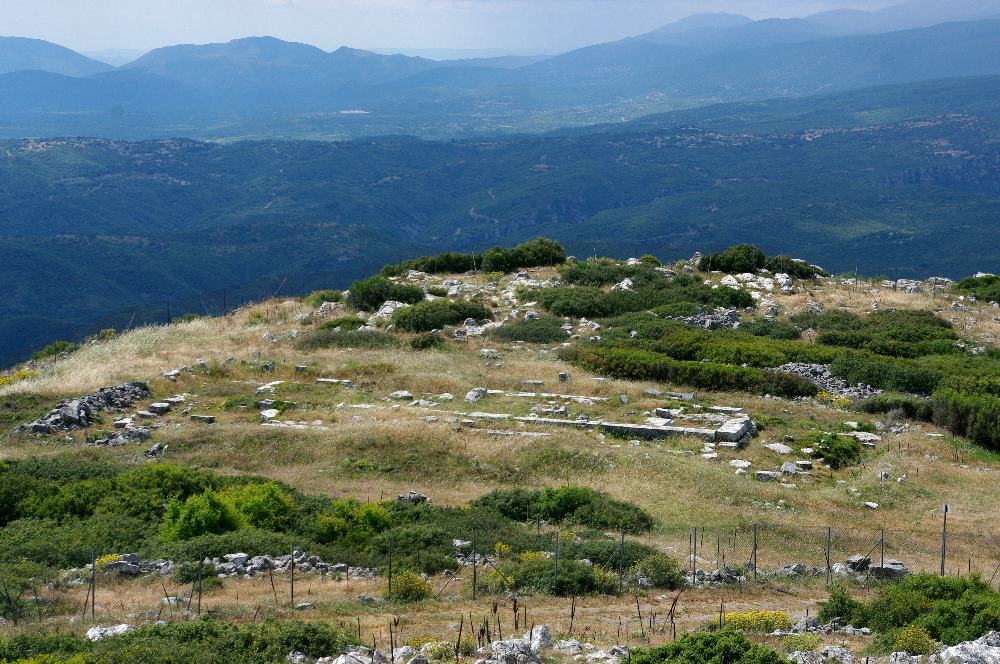
Fig. 4: Overview of the Doric temple at Profitis Elias.
Originally, the shrine consisted of an open-air sanctuary. At a later point an early temple was constructed, later replaced by the one which is visible today. This Late Archaic temple was the largest such building constructed completely of stone in Arcadia, with foundations measuring c. 15.00×32.50 m, i.e. almost exactly 100 Doric feet, and featuring 6×14 columns. Notably, Dholiana marble mined almost 30 km away in the Parnon mountain at Tegea was used for the temple, reflecting a major labour investment.
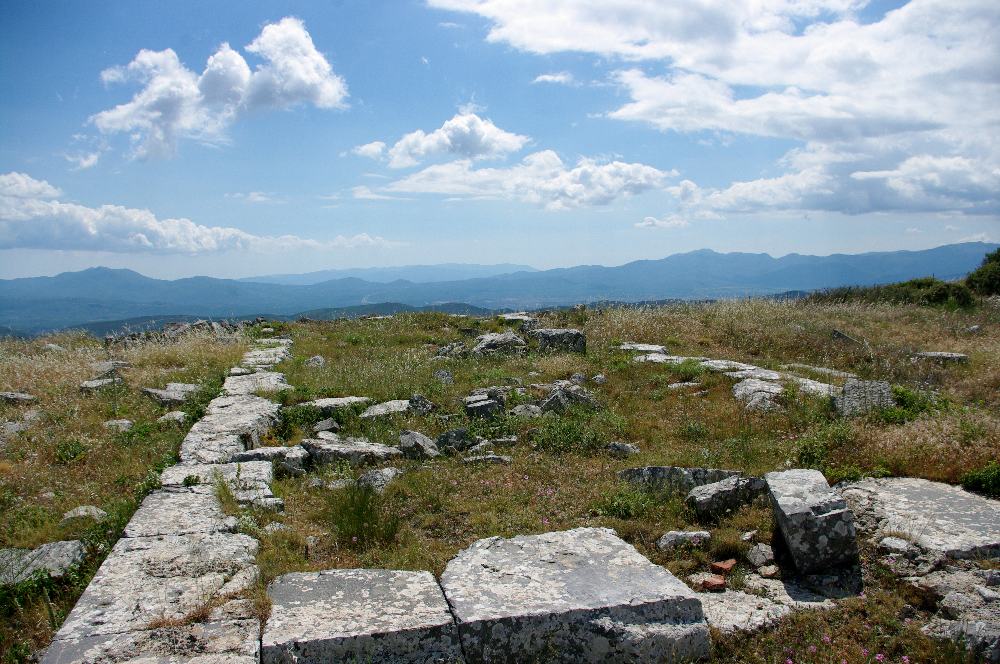
Fig. 5: The remains of the Doric temple at Profitis Elias.
A second temple, identified with that of Athena Soteria and Poseidon mentioned by Pausanias (8.44.4), was located on the Vigla hill c. 4.5 km north-east of the city of Asea. Originally a temple of wood and clay from c. 630–620 BC was located here. At the end of the 6th century BC this was replaced by one in stone, and, as in the case of the temple at Agios Elias, Dholiana marble was used. A third temple, of Meter theon, was according to literary evidence located closer to the acropolis of Asea, but this building has never been found.
The settlement itself on the Paleokastro hill grew considerably during the 6th century BC, and the archaeological evidence indicates a significant increase in farmsteads during Classical times. At this point the city of Asea may have controlled a territory of about 60 km2 with a potential population of 2000–3000 individuals. Based on this and literary evidence it has also been assumed that Asea became an independent polis around 500 BC, although the construction of the Archaic temples certainly suggests that some sort of earlier political organization existed.
Later in the Classical period, during the early 4th century BC, the acropolis of Asea was equipped with a circuit wall. In the 370s BC Asea were among the cities from which the population was moved in order to populate the newly settled city of Megalopolis. Despite this the city lived on, as attested by Xenophon (Hell. 7.5.5) who mentions Asea as one of four poleis of certain importance in the area. Towards the end of the 3rd century BC the walls of Asea were extended to incorporate the lower city. Moreover, geophysical survey campaigns have shown that inside the walls the lower city was laid out according to an orthogonal plan with regular city blocks measuring c. 38×56 m and radiating out in a fan-like fashion from the Paleokastro hill. This planned approach was presumably adopted at least partly during the 3rd century BC, since four of the blocks conform almost exactly to the ideal width at this time (38×38 m, consisting of four houses measuring 18×18 m with 2 m-wide alleys in between them). During the Hellenistic period Asea belonged the Achaian Confederacy.

Fig. 6. The walls of Asea.
Despite the investments in infrastructure, including defensive systems, the polis of Asea seems to have lost its independence during the 3rd century BC. Throughout the following two centuries survey evidence shows that the city contracted. This is corroborated by Strabo (8.3.12), who wrote in the early Imperial period that Asea was a village (kome) of Megalopolis. Just over a century later the travel writer Pausanias (8.44.3) noted that the city was already in ruins. During Roman times much of the settlement pattern around Asea also changed as large farms, interpreted as villae rusticae, appeared from the 1st–2nd century AD onwards, and flourished during the 4th–6th century AD. These villas were mostly located 3–4 km from each other on the lowest foothills, close to water sources and overlooking the fertile agricultural fields. The presence of satellite sites 100–400 m around the villas suggests intensive land usage. The Paleokastro hill was refortified during the Late Byzantine period.
Bibliography
Forsén, J. (ed.), Agios Elias of Asea, Arcadia. From early sanctuary to Medieval village (ActaAth-4°, 58:1), Stockholm, 2021.
Forsén, J., H. Mommsen & C. Shriner 2017. ‘Some preliminary remarks concerning a neutron activation analysis (NAA) study and fabric correlation of ceramic samples from Asea in Arcadia, Greece’, in Speira. Festschrift for A. Dousougli & K. Zachos, ed. E. Mermenka, Athens, 91–108.
Forsén, J., T. Smekalova & Esko Tikkala 2017. ’The lower city of Asea, Arcadia. Results from a geophysical project 2001-2012’, Opuscula 10, 153–163.
Unkel, I., A. Schimmelmann, C. Shriner, J. Forsén, C. Heymann & H. Brückner 2014. ’The environmental history of the last 6500 years in the Asea valley (Peloponnese, Greece) and its linkage to the local archaeological record’, in Annals of Geomorphology 58 (Suppl. 2), 89–107.
Forsén, J. 2008. ‘The Asea valley from the Neolithic period to the Early Bronze Age’, in The Aegean in the Neolithic, Chalcolithic and the Early Bronze Age. Proceedings of the International Symposium held in Urla-Izmir (Turkey), 12–19 October 1997, in Ankara University. Research Center For Maritime Archaeology 1, eds. H. Erkanal, H. Hauptmann, V. Sahoglu & R. Tuncel, Ankara, 191–196.
Forsén, J. & B. Forsén 2003, The Asea valley survey. An Arcadian mountain valley from the Palaeolithic period until modern times (ActaAth- 4°, 51), Stockholm.
Forsén, J., B. Forsén & L. Karlsson 2005. ’Recent research concerning the walls of Asea’, in Ancient Arcadia. Papers from the Third International Seminar on Ancient Arcadia, held at the Norwegian Institute at Athens, 7-10.5. 2002 (Papers from the Norwegian Institute at Athens, 8), ed. E. Østby, Athens, 307–319.
Forsén, J. & E. Alram-Stern 2001–2002. ‘The Asea valley survey 1994-1996: The Neolithic and Early Bronze Age periods’, in The Proceedings from the 6th International congress of Peloponnesian Studies, Tripolis 10–12.9.2000, Athens, 17–24.
Forsén, J. & B. Forsén & L. Karlsson 2002. ‘The walls of Asea’, OpAth 27, 83–104.
Forsén, J., B. Forsén & E. Østby 1999. ‘The sanctuary of Agios Elias — Its significance, and its relations to surrounding sanctuaries and settlements’, in Defining Ancient Arkadia (Acts of the Copenhagen Polis Centre, 6), Copenhagen, 169–191.
Forsén, J.1998. ‘The Asea valley from Archaic to Hellenistic times’, in The Proceedings of the 5th International congress of Peloponnesian Studies, Argos-Nauplion 6-10.9.1995, T. 2, Athens, 289–297.
Forsén, J. 1997. ‘Prehistoric Asea revisited’, OpAth 21, 41–72.
Forsén, J., B. Forsén & M. Lavento 1997. ‘The Asea valley survey - a preliminary report of the 1994 Season’, OpAth 21, 73–97.
Forsén & B. Forsén 1997. ‘The polis of Asea - A case-study of how archaeology can expand our knowledge of the history of a polis’, Papers from the Copenhagen Polis Centre (Historia Einzelschriften, 117), 163–176.

